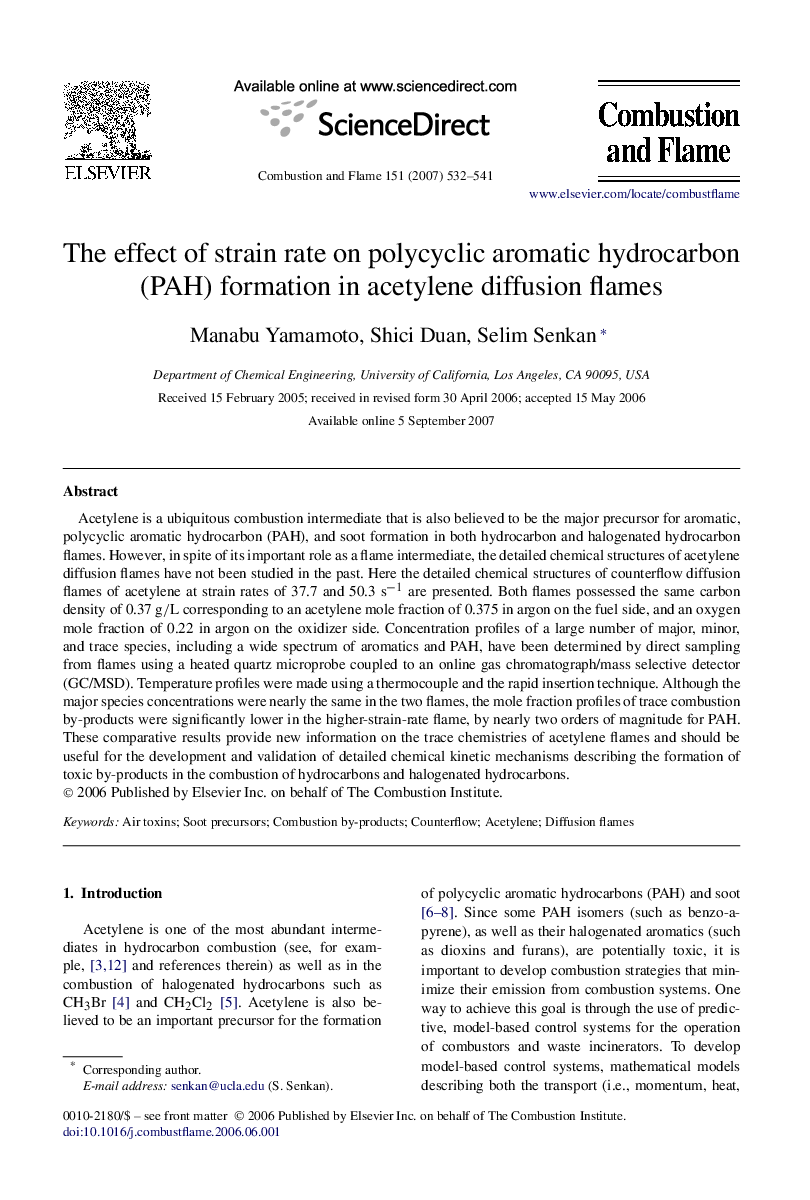| Article ID | Journal | Published Year | Pages | File Type |
|---|---|---|---|---|
| 169620 | Combustion and Flame | 2007 | 10 Pages |
Acetylene is a ubiquitous combustion intermediate that is also believed to be the major precursor for aromatic, polycyclic aromatic hydrocarbon (PAH), and soot formation in both hydrocarbon and halogenated hydrocarbon flames. However, in spite of its important role as a flame intermediate, the detailed chemical structures of acetylene diffusion flames have not been studied in the past. Here the detailed chemical structures of counterflow diffusion flames of acetylene at strain rates of 37.7 and 50.3 s−1 are presented. Both flames possessed the same carbon density of 0.37 g/L corresponding to an acetylene mole fraction of 0.375 in argon on the fuel side, and an oxygen mole fraction of 0.22 in argon on the oxidizer side. Concentration profiles of a large number of major, minor, and trace species, including a wide spectrum of aromatics and PAH, have been determined by direct sampling from flames using a heated quartz microprobe coupled to an online gas chromatograph/mass selective detector (GC/MSD). Temperature profiles were made using a thermocouple and the rapid insertion technique. Although the major species concentrations were nearly the same in the two flames, the mole fraction profiles of trace combustion by-products were significantly lower in the higher-strain-rate flame, by nearly two orders of magnitude for PAH. These comparative results provide new information on the trace chemistries of acetylene flames and should be useful for the development and validation of detailed chemical kinetic mechanisms describing the formation of toxic by-products in the combustion of hydrocarbons and halogenated hydrocarbons.
